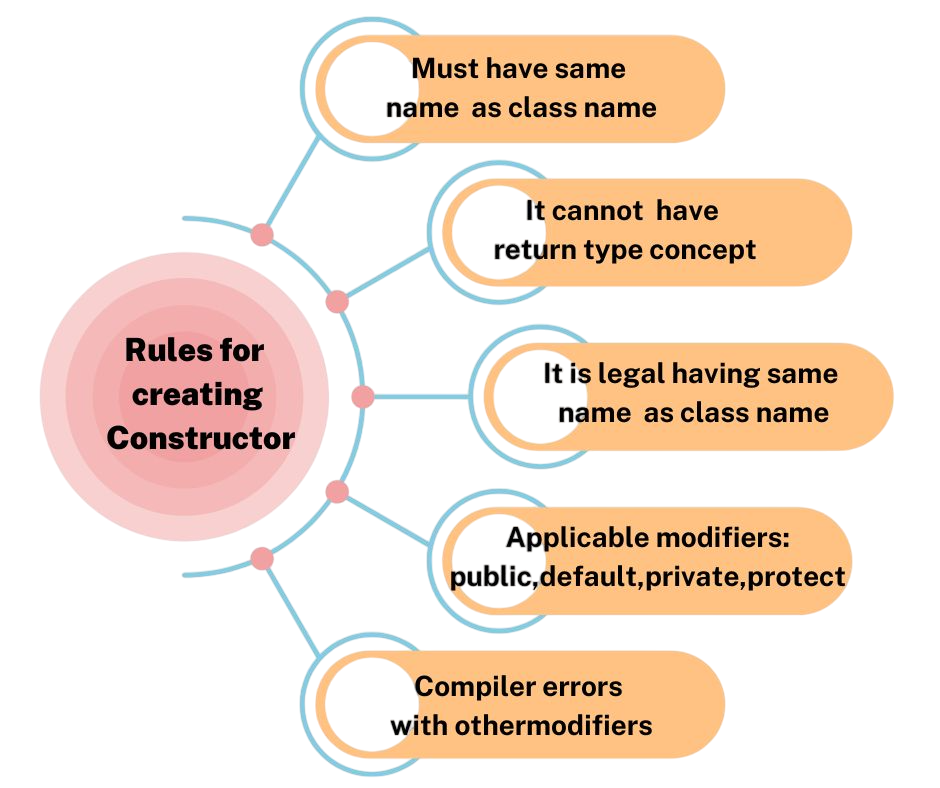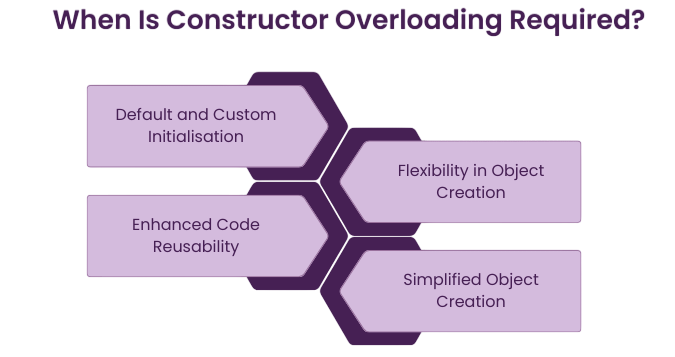
- Introduction to Constructor Overloading in Java
- What is Constructor Overloading in Java?
- Rules for Overloading Constructors
- Examples of Constructor Overloading
- Constructor vs Method Overloading
- Use Cases in Real-World Projects
- Default Constructor vs Overloaded Constructor
- Best Practices in Constructor Design
- Constructor Overloading in Inheritance
- Conclusion
Introduction to Constructor Overloading in Java
In Java, a constructor is a special method used to initialize objects. Unlike regular methods, constructors do not have a return type, and their name must match the class name. When an object is created using the new keyword, the corresponding constructor is invoked automatically. To see how constructor behavior fits into broader development workflows, exploring FullStack With Java Training reveals how object instantiation, class design, and lifecycle management are handled across full-stack Java applications from backend logic to frontend integration. Java provides a default constructor if no constructors are defined, but programmers can create their own constructors to set initial values or perform setup operations.
To Earn Your FullStack With Java Training Certification, Gain Insights From Leading Web Developer Experts And Advance Your Career With ACTE’s FullStack With Java Training Today!
What is Constructor Overloading in Java?
Constructor overloading in Java lets a class have multiple constructors, each with a different set of parameters. This feature helps developers create objects in various ways, depending on the types and number of arguments provided. For instance, consider a Book class that can be set up with different constructors: one with no arguments, one that requires just a title, and another that needs both a title and a price. To manage and track such variations effectively in collaborative environments, exploring Git and Version Control reveals how developers maintain constructor changes, synchronize updates, and ensure consistency across branches and repositories. By using constructor overloading, the code becomes more readable and flexible. It allows objects to be initialized in different ways while still using the same class. The Java Virtual Machine (JVM) determines which constructor to use based on the arguments given during object creation, making the process efficient and clear.
Rules for Overloading Constructors
Overloading constructors in Java follows principles similar to method overloading, with specific constraints: parameter types and order must differ, and ambiguity should be avoided to ensure clarity. To see how these principles are applied in enterprise-grade development, exploring FullStack With Java Training reveals how constructor overloading supports flexible object creation, modular design, and clean initialization across full-stack Java applications.
- Parameter List Must Vary: Each overloaded constructor must differ in the number, type, or order of parameters.
- Access Modifiers Can Differ: Constructors may have different access levels (public, protected, etc.), but this does not affect overloading.
- Cannot Overload Solely by Return Type: Overloading in Java is not determined by return type, unlike some other languages.
- Can Call Another Constructor Using this(): To reduce code duplication, constructors can invoke one another using this(), which must be the first statement.

These rules ensure compile-time resolution and prevent ambiguity in constructor calls.
Would You Like to Know More About FullStack With Java Training? Sign Up For Our FullStack With Java Training Now!
Examples of Constructor Overloading
Here is a simple example using a Person class:
- public class Person {
- String name;
- int age;
- // Default constructor
- public Person() {
- this.name = “Unknown”;
- this.age = 0;
- }
- // Constructor with one parameter
- public Person(String name) {
- this.name = name;
- this.age = 0;
- }
- // Constructor with two parameters
- public Person(String name, int age) {
- this.name = name;
- this.age = age;
- }
- }
- // Usage
- Person p1 = new Person(); // Calls default constructor
- Person p2 = new Person(“Alice”); // Calls 1-parameter constructor
- Person p3 = new Person(“Bob”, 30); // Calls 2-parameter constructor
This pattern provides flexibility in object instantiation while keeping the logic centralized and maintainable.
Constructor vs Method Overloading
Constructor overloading and method overloading are two important ideas in object-oriented programming that use the same name with different parameter lists. However, they have different purposes. First, constructors are used to initialize objects. Methods, on the other hand, perform actions on those objects after they are created. To understand how object lifecycle and behavior separation scale in distributed systems, exploring What are Microservices reveals how microservices isolate initialization, execution, and state management promoting modularity, scalability, and independent deployment across loosely coupled services. Another key difference is that constructors do not have a return type, not even void. This sets them apart from regular methods. Additionally, constructor overloading happens within the same class, while method overloading can extend to inherited classes through polymorphism. In summary, constructor overloading focuses on how objects are created, while method overloading highlights the functions those objects can offer once they are ready.
Use in Operator Overloading
Constructor overloading is widely used in: frameworks, data models, configuration handling, and testing scenarios where flexible object creation is essential. To contrast this with dynamic initialization in interpreted languages, exploring What is Python Programming reveals how Python handles object setup with default arguments, keyword parameters, and flexible function signatures eliminating the need for overloaded constructors while maintaining clarity and control.
- Frameworks and Libraries: For example, classes in JavaFX or Swing often use overloaded constructors for components (JButton(String text), JButton(Icon icon), etc.).
- Data Models: Where objects may be initialized with partial or complete data depending on the context (e.g., from user input or database).
- Configuration Handling: Classes that accept optional configurations (like File, Scanner, or ArrayList) often use constructor overloading for flexibility.
- Testing: It enables the creation of test objects with different properties without writing multiple setup methods.
These use cases demonstrate the practical importance of designing versatile constructors.
Are You Interested in Learning More About FullStack With Java Training? Sign Up For Our FullStack With Java Training Today!
Default Constructor vs Overloaded Constructor
In Java, a default constructor is a specific type of constructor that does not accept any arguments. Java automatically creates this constructor when you do not define any constructors in your class. However, if you write any constructor with parameters, Java will not create a default one for you. Developers often create overloaded constructors, which are multiple constructors with different parameter lists, to offer various ways to set up an object. To understand how flexible initialization is handled in dynamic languages, exploring Know About Python List reveals how Python uses default arguments and list structures to simplify object setup allowing developers to manage data collections without relying on multiple constructor signatures. If you want to use both a default constructor and overloaded constructors in your class, you can define the default constructor yourself. This is especially important in frameworks like Hibernate and Spring, which use reflection to create class instances and need a constructor without arguments to work correctly.
Preparing for Full Stack With Python Job Interviews? Have a Look at Our Blog on FullStack With Java Training Interview Questions and Answers To Ace Your Interview!
Best Practices in Constructor Design
- Avoid Code Duplication: Use this() to chain constructors and reuse initialization logic.
- Initialize Mandatory Fields: Ensure required object fields are always initialized via at least one constructor.
- Keep Logic Minimal: Constructors should not contain heavy business logic only setup and validation.
- Use Descriptive Parameter Lists: To avoid confusion in overloaded versions.
- Combine with Builder Pattern: For classes with many optional fields, consider using a builder instead of dozens of constructors.

Following these practices keeps the codebase clean, understandable, and maintainable.
Constructor Overloading in Inheritance
In Java inheritance, constructors are not inherited, but you can call superclass constructors using super() in a subclass constructor.When a subclass defines its own overloaded constructors, it often invokes different superclass constructors to ensure proper object initialization. To understand how this practice fits into broader development workflows, exploring Software Developer reveals how professionals manage inheritance, constructor chaining, and object lifecycle to build reliable, maintainable applications across diverse platforms.
- class Animal {
- Animal(String type) {
- System.out.println(“Animal type: ” + type);
- }
- }
- class Dog extends Animal {
- Dog() {
- super(“Dog”);
- System.out.println(“Dog created”);
- }
- Dog(String breed) {
- super(“Dog”);
- System.out.println(“Breed: ” + breed);
- }
- }
This allows subclasses to build upon the constructor logic of their parent classes using different initialization flows.
Conclusion
Constructor overloading is a foundational concept in Java that allows classes to offer multiple ways to initialize their objects. It promotes flexibility, code reuse, and better control over object creation. By understanding how and when to use overloaded constructors effectively along with best practices and limitations, developers can design more robust and user-friendly classes. To see how these principles apply in real-world development, exploring FullStack With Java Training reveals how constructor design, object initialization, and modular architecture come together to build scalable, maintainable applications across the full Java stack. Whether you’re building a library, designing data models, or creating GUI components, constructor overloading is a powerful tool that enhances both functionality and maintainability. Let me know if you’d like sample code for a real-world class using overloaded constructors and chaining with this() and super()!





